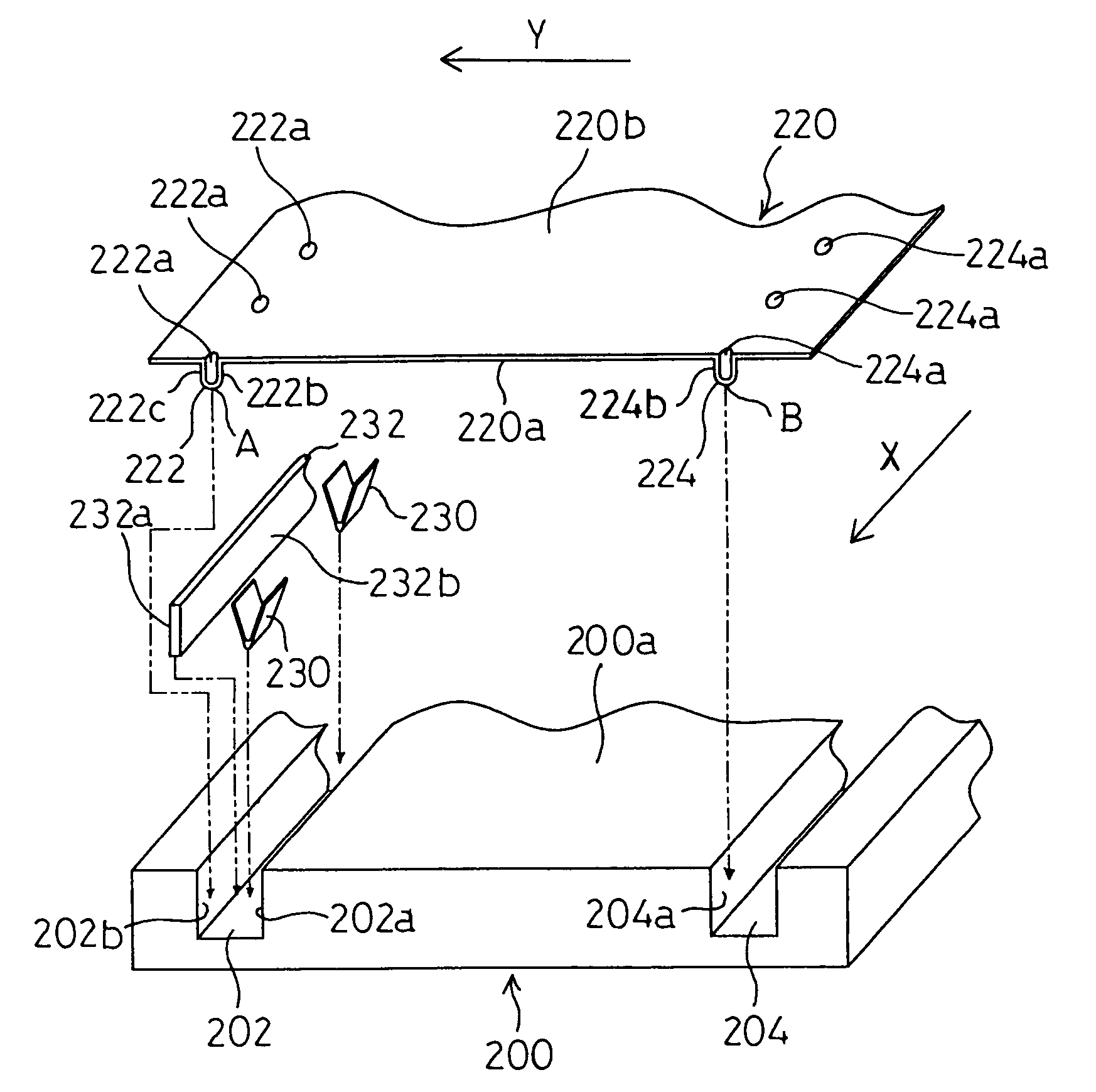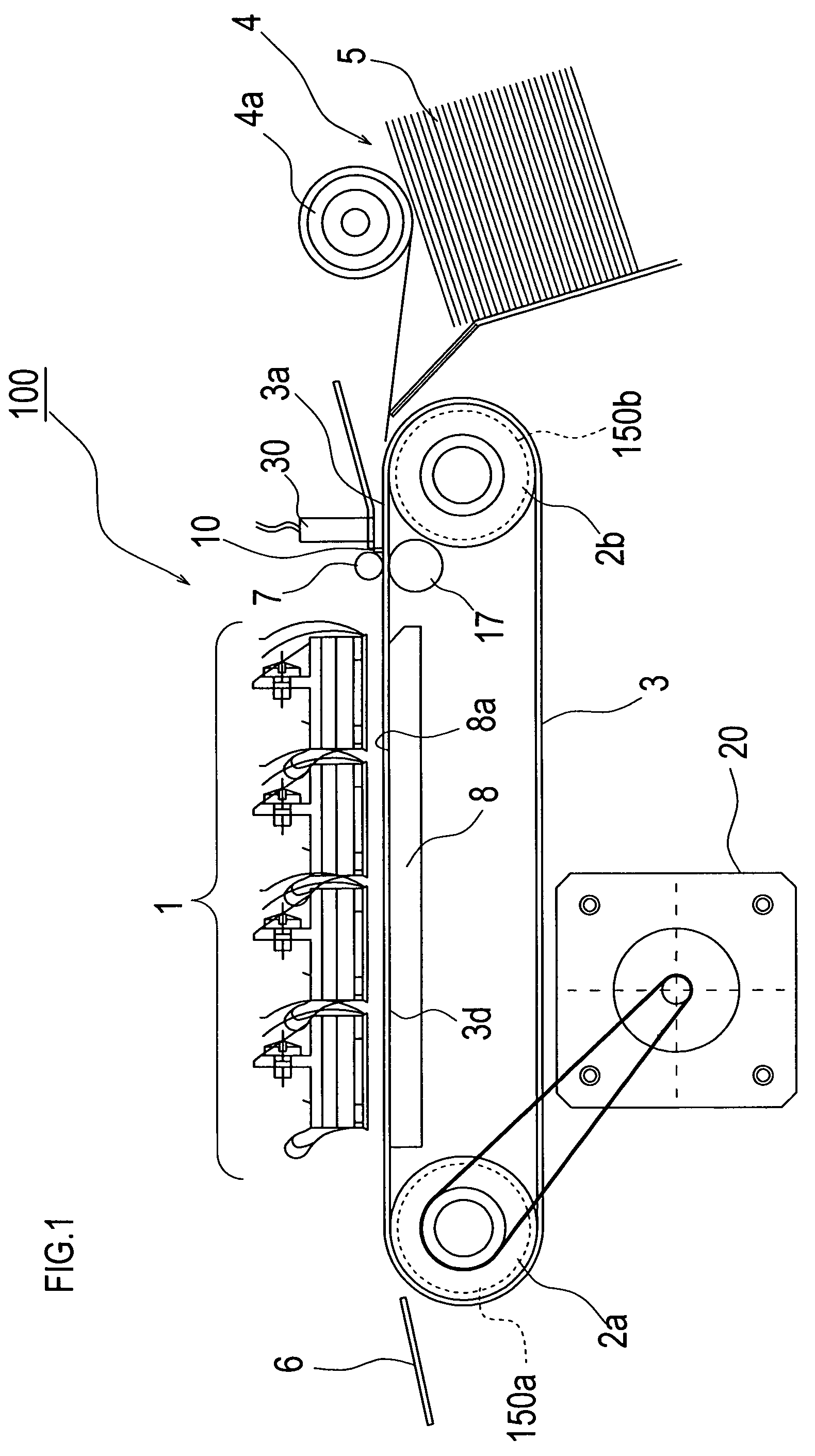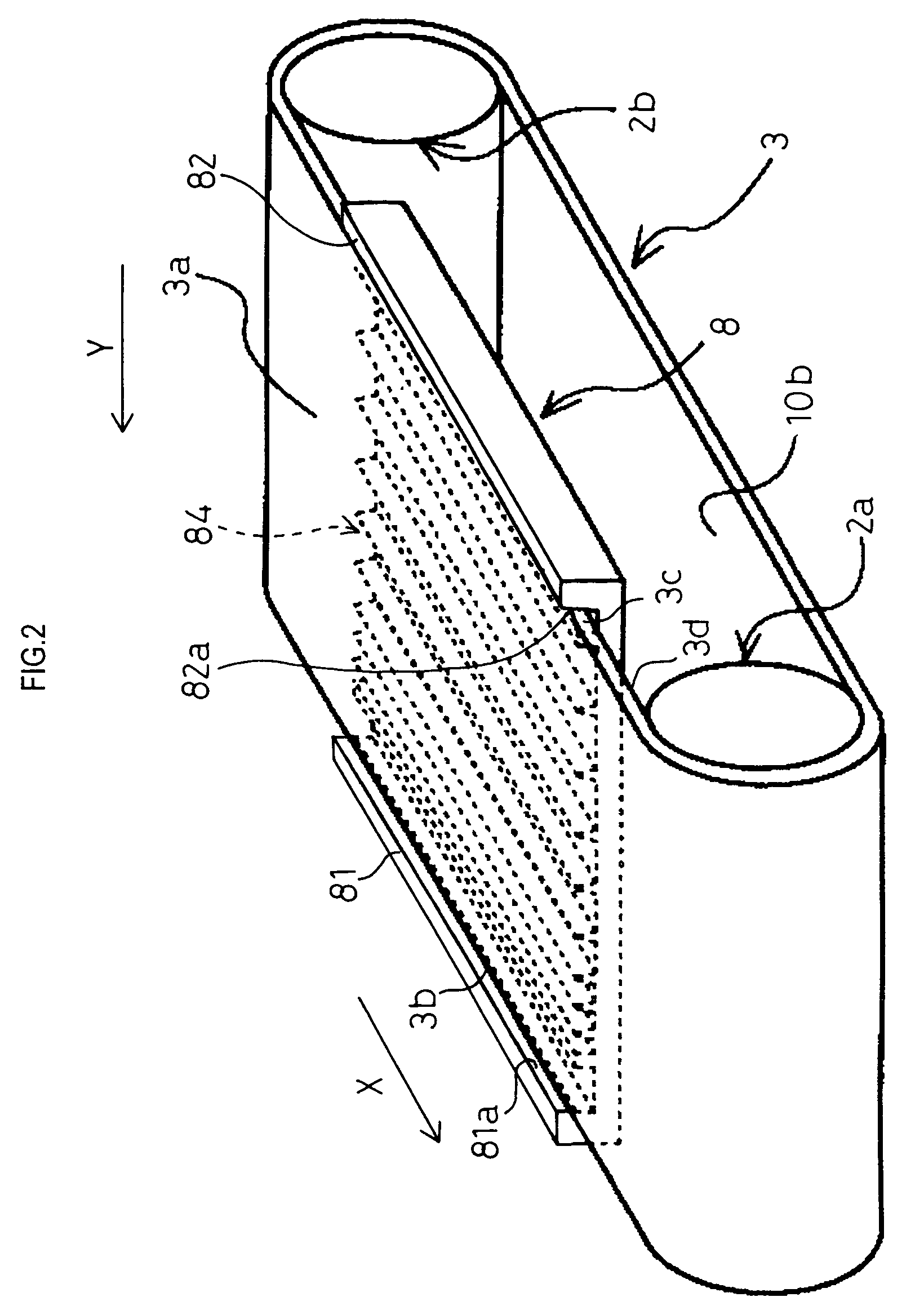Conveying mechanism
a technology of conveying mechanism and transfer belt, which is applied in the direction of conveyor parts, thin material processing, article feeders, etc., can solve the problems of not always avoiding the meandering of the transfer belt within the image forming area, the position deviation, and the position deviation, so as to reduce the number of components
- Summary
- Abstract
- Description
- Claims
- Application Information
AI Technical Summary
Benefits of technology
Problems solved by technology
Method used
Image
Examples
first embodiment
(First Embodiment)
[0076]FIG. 1 is a schematic side view showing the main part of an ink jet printer provided with a conveying mechanism 100 of the present embodiment. FIG. 2 is a schematic perspective view showing the relationship among a transfer belt 3, transfer rollers 2a and 2b, and a guide member 8 in the conveying mechanism 100.
[0077]As illustrated in FIG. 1, this printer comprises a print head 1 of an inkjet system, two transfer rollers 2a and 2b, a cylindrical (endless) transfer belt 3 wound around these transfer rollers 2a and 2b, and a guide member 8.
[0078]In this printer, a recording medium 5, such as paper and cloth, is fed toward the transfer belt 3 from a supply unit 4 by the drive of a pickup roller 4a. Then the transfer belt 3 transfers the recording medium 5 to an image forming area under the print head 1 by the rotation of the transfer rollers 2a and 2b. Subsequently, an image is formed and recorded on the recording medium 5 by the discharge of ink from the print h...
second embodiment
(The Second Embodiment)
[0104]In the conveying mechanism of the present embodiment, only the configurations of the transfer belt and the guide member differ from those of the aforementioned first embodiment. Therefore, only the different configurations will be mainly described, while the components with the same configurations are denoted with the same reference numerals and the description of the same is omitted.
[0105]FIG. 3 is an explanatory view showing the relationship between a guide member 200 and a transfer belt 220 in the conveying mechanism of the present embodiment.
[0106]The guide member 200 of the present embodiment is provided at a position facing the print head 1 (image forming area) via the transfer belt 220 like the guide member 8 of the first embodiment.
[0107]The guide member 200 of the present embodiment is disposed so as to slightly push up the transfer belt 220 from the under surface of the transfer belt 220, thereby applying tension to the transfer belt 220.
[0108]...
third embodiment
(The Third Embodiment)
[0163]In the conveying mechanism of the present embodiment, only the configurations of the transfer belt and the guide member mainly differ from those of the aforementioned first embodiment. Therefore, only the different configurations will be mainly described, while the components with the same configurations are denoted with the same reference numerals and a description of the same is omitted.
[0164]FIG. 7 is an explanatory view showing the relationship between a guide member 300 and a transfer belt 320 in the conveying mechanism of the present embodiment.
[0165]The guide member 300 of the present embodiment is provided at a position facing the print head 1 (image forming area) via the transfer belt 320, like the guide member 8 of the first embodiment. The guide member 300 is a plate-like member with a configuration such as a rectangular parallelepiped.
[0166]A transfer belt 320 has a ring configuration (endless configuration). Ring-shaped endless guide portions...
PUM
 Login to View More
Login to View More Abstract
Description
Claims
Application Information
 Login to View More
Login to View More - R&D
- Intellectual Property
- Life Sciences
- Materials
- Tech Scout
- Unparalleled Data Quality
- Higher Quality Content
- 60% Fewer Hallucinations
Browse by: Latest US Patents, China's latest patents, Technical Efficacy Thesaurus, Application Domain, Technology Topic, Popular Technical Reports.
© 2025 PatSnap. All rights reserved.Legal|Privacy policy|Modern Slavery Act Transparency Statement|Sitemap|About US| Contact US: help@patsnap.com



